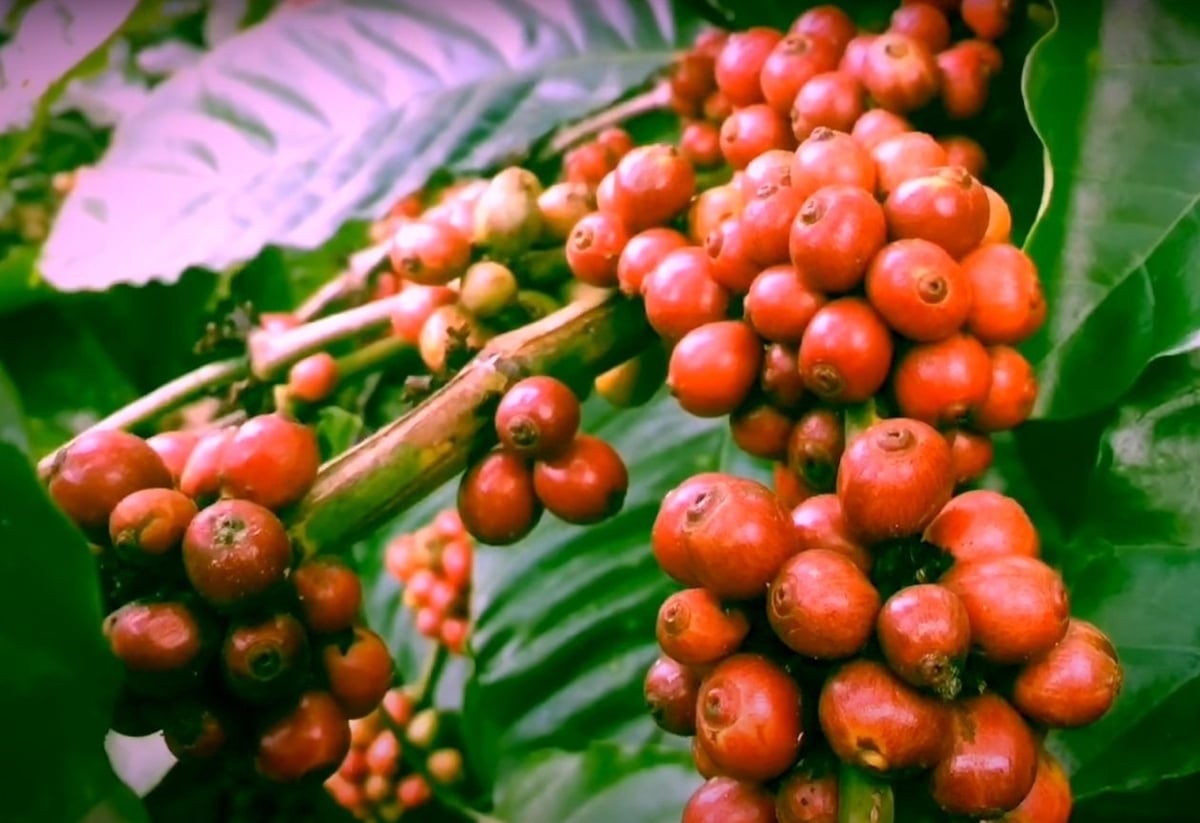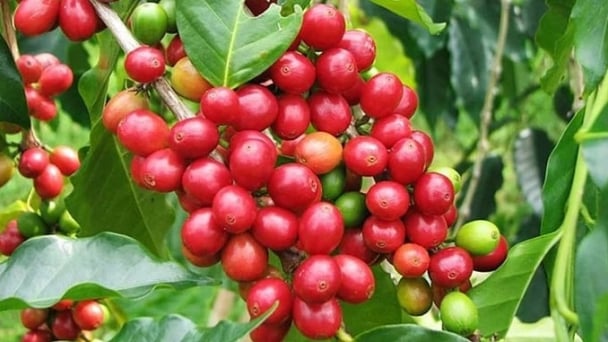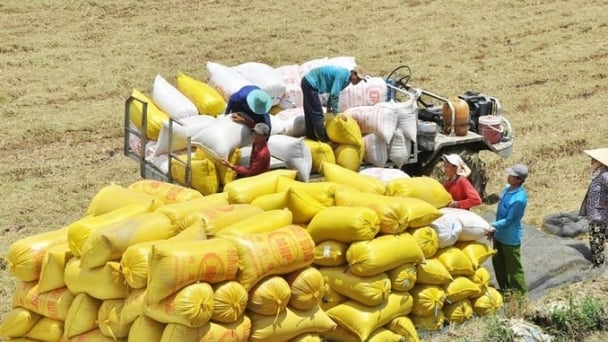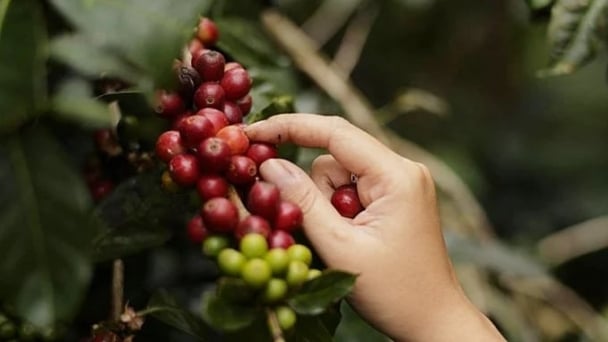May 29, 2025 | 17:53 GMT +7
May 29, 2025 | 17:53 GMT +7
Hotline: 0913.378.918
May 29, 2025 | 17:53 GMT +7
Hotline: 0913.378.918

Coffee harvest in the Central Highlands. Photo: Son Trang.
In early April, following the U.S. Government's announcement of reciprocal tariffs imposed on trade partners, including Vietnam, Vietnamese coffee prices experienced a sharp and continuous decline. On April 1, the price of coffee in the Central Highlands stood at VND 132,000/kg. Just over a week later, on April 9, the price dropped to VND 118,000/kg. Particularly in Lam Dong, the price decreased to only VND 116,000/kg.
In the global coffee market, coffee prices also continuously decreased sharply. On April 9, the price of Robusta coffee in London had fallen to USD 4,608/ton, down USD 1,251/ton compared to a record price of USD 5,849/ton. Meanwhile, on the New York market, the price of Arabica coffee dropped to 322.9 cts/lb, a decrease of 106.05 cts/lb from the peak of 429.95 cts/lb.
However, right after the U.S. Government announced a 90-day delay in the imposition of reciprocal tariffs, coffee prices in Vietnam immediately had positive reactions. On April 10, in the Central Highlands provinces of Dak Lak, Dak Nong, and Gia Lai, coffee prices rose by VND 1,000/kg, reaching VND 119,000/kg. In Lam Dong, the price increased by VND 1,300/kg to VND 117,300/kg.
Since then, coffee prices in the Central Highlands have continued to rise. By the morning of April 16, coffee prices had returned to VND 132,000/kg, equivalent to the level before the U.S. announced the reciprocal tariffs imposed on trade partners.
On the global market, both Robusta and Arabica coffee prices have also increased steadily and are now at levels comparable to those before April 2.

Robusta coffee supply increases as Brazil and Indonesia begin harvesting. Photo: Son Trang.
The increase in coffee prices can be attributed to many businesses accelerating purchases to take advantage of good exports to the U.S. during the time the U.S. Government temporarily postponed the imposition of reciprocal tariffs. The U.S. Government's delay in the imposition of reciprocal tariffs has also helped restore normal coffee trading and business activities.
However, according to Mr. Nguyen Quang Binh, a coffee market analyst, the main reason behind the recent sharp increase in coffee prices is not supply and demand, but rather the depreciation of the U.S. dollar (USD). President Donald Trump's tariff policy has created long-term risks, leading to a loss of confidence among financial investors in the USD, making them less enthusiastic about this currency. Even when the USD strengthens again in the future, investors may still be willing to "flee" from this currency to avoid potential losses in business.
When the USD is no longer seen as a reliable haven for financial investors, this opens up opportunities for commodity prices on trading floors. For coffee, when the USD/DXY index falls below 100 points, speculators feel more secure and increase their short buying on coffee trading floors.
In Vietnam, the price of the USD experienced an upward trend recently, surpassing VND 26,000. This has been the main cause in pushing coffee prices up in the Central Highlands.
Coffee prices are expected to continue rising in the coming days. However, Mr. Binh said that prices are unlikely to return to the record high of USD 5,849/ton for Robusta coffee on the London trading floor and 429.95 cts/lb for Arabica coffee on the New York floor. At first, Brazil and Indonesia began harvesting Robusta coffee, which is increasing the supply of this coffee variety.
Moreover, the U.S. is the world's largest coffee consumer, so a significant increase in global coffee prices could attract the attention of President Donald Trump's Government. With the unpredictable policies given by the U.S. Government, speculators are likely to become more cautious and calculate to stabilize coffee prices at certain levels on the trading floors.
On the morning of April 3, U.S. President Donald Trump announced the reciprocal tariff rates for 50 trading partners, including Vietnam. This led to a sharp decrease in agricultural product exports to the U.S. market. According to Vietnam Customs, in the first quarter of this year, Vietnam's coffee exports decreased by 15.3% in volume, reaching only 496,000 tons. However, thanks to a sharp increase in export prices, the turnover reached over USD 2.8 billion, an increase of 45.8% compared to the same period in 2024.
* USD 1 = VND 25,670 - Source: Vietcombank
Translated by Thu Huyen

(VAN) Rubber prices on May 28, 2025 are maintaining an upward trend. Domestic latex prices remain stable, trading in the range of VND 397 to VND 462/TSC.

(VAN) Coffee prices on May 28, 2025, show mixed movements. Domestically, prices dropped sharply by VND 1,600, trading at VND 121,700 – VND 122,200/kg.

(VAN) Pepper prices on May 28, 2025, remained unchanged globally. Domestic pepper prices have increased by VND 1,500, trading at VND 147,000 – VND 148,000/kg.

(VAN) Rice prices on May 27, 2025, show no new changes for both paddy and milled rice. Meanwhile, Vietnam’s export rice prices continue to remain flat.

(VAN) Pepper prices on May 27, 2025, recorded a slight increase in Indonesia, while domestic prices remain stable, trading at VND 146,000 to VND 147,000/kg.

(VAN) Rubber prices on May 27, 2025, are fluctuating sharply today. Domestic latex prices continue to trade around the range of VND 397 to VND 462/TSC.

(VAN) Coffee prices on May 27, 2025, continue to remain flat. Domestic coffee market is still trading around the range of VND 122,000 to VND 122,500/kg.